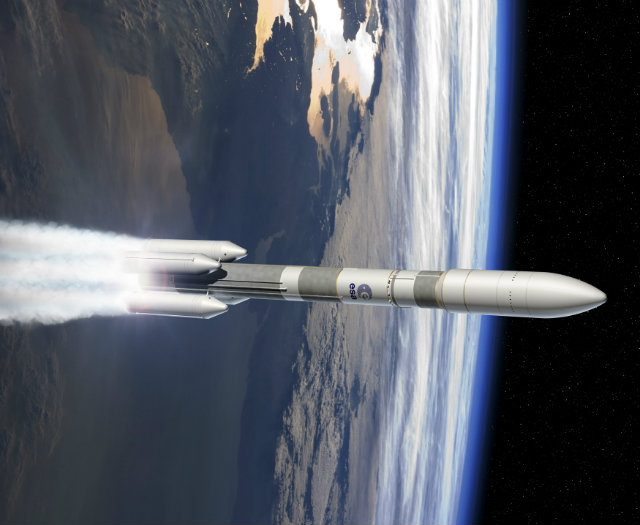Europe has spelled out a clear vision of its place in space, giving a further green light to the Ariane 6 launcher and confirming its intention of joining the USA in keeping the International Space Station flying through 2024.
Government ministers of the European Space Agency’s 20 member countries meeting in Luxembourg on 2 December also determined to ensure that ESA’s 2016 and 2018 ExoMars robotic exploration missions are fully funded, and reaffirmed their intention that ESA be a “critical path” partner to NASA and other space agencies in international efforts to explore the Moon, bring samples back from Mars and, eventually, send humans beyond the ISS’s low-Earth orbit.
Critically, ministers also gave their blessing to the plan by Airbus and Safran to form a joint venture to consolidate the Ariane programme. That plan, announced earlier this year and fleshed out in detail for the ministerial meeting, is designed to keep Ariane competitive with US upstart SpaceX by puting a cost-efficient industrial structure in place of a politically-inspired system that doles out launcher workshare in rough proportion to ESA member states’ budget contributions.
At present, Ariane 5 launches cost €150-200 million ($192m-256m) each, and ESA’s launch operator, Arianespace, still needs public subsidy to break even. By combining a new modular, solid-engine design that will share elements with an in-development “C” iteration of ESA’s smaller Vega launcher, Ariane 6 (pictured) is supposed to fly for around €70 million per launch.
Ministers emphasised, though, that Ariane 6 would get no operational subsidy. The new Airbus Safran Launchers joint venture, which will incorporate Arianespace and those aspects of France’s CNES space agency directly linked to launcher procurement and operation, is expected to ensure competitive prices that ensure Europe remains a world leader in civil launches and offer good value for European institutional launches.
Ministers also directed ESA’s director general – currently Jean-Jacques Dordain, who is set to retire as early as year-end – to make proposals by June 2015 for Ariane 6 and Vega-C technology demonstrations. The DG will also have to spell out plans for marshalling a budget for extending ESA’s ISS role through 2024, when the station is expected to be de-orbited.

Ariane 6 artist's impression
ESA
Source: FlightGlobal.com



















